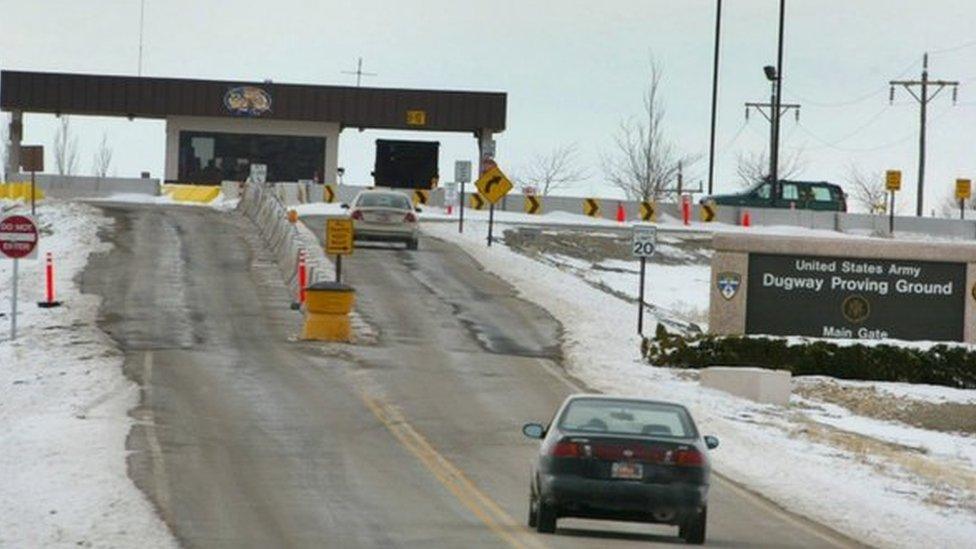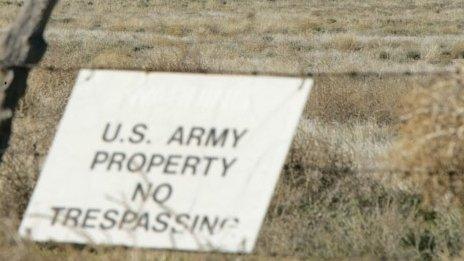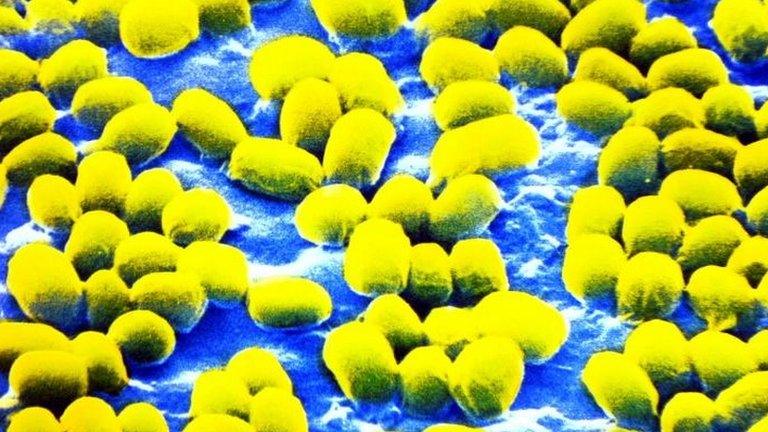Anthrax scandal: US army orders new toxins crackdown
- Published

The Dugway facility was the centre of the latest contamination
The US military has ordered a new crackdown on laboratories producing biological toxins, after another anthrax contamination scare.
A safety review and production freeze has been ordered at all defence department facilities handling the biological agents.
It follows a new discovery of anthrax contamination at the Dugway research centre in Utah.
A review was ordered this year after live anthrax was sent in error to labs.
Those shipments took place between March 2014 and April 2015.
The labs were in 11 US states as well as South Korea and Australia, the Pentagon said, although it insisted there was no known risk to the general public.
Symptoms of anthrax exposure include skin ulcers, nausea, vomiting and fever, and it can cause death if untreated.
Research 'to be hit'
Army Secretary John McHugh imposed the new crackdown after anthrax contamination was discovered in "secure areas located outside the primary containment area" at Dugway.
The Centers for Disease Control and Prevention said in a statement: "If proper biosafety procedures had been followed, these surfaces should have been free of the agent."
It said there was no risk to the public.
After the scare earlier this year, the army suspended production, handling, testing and shipment of anthrax at four laboratories - Dugway and three in Maryland.
That moratorium is now expanded to critical reagents and other agents and toxins.
Those laboratories and five others must also conduct new safety reviews.
Mr McHugh said: "I understand that these measures will affect ongoing research activities, and I expect to grant waivers in appropriate circumstances."

What is anthrax?

Workers must wear protective clothing
Anthrax bacteria live primarily in inactive spores and are found naturally in the soil, but people can ingest or inhale spores, which can make the anthrax active.
Not all will be sickened when exposed to anthrax but left untreated, anthrax illness can turn very serious or lead to death.
A blood culture test is used to confirm anthrax exposure.
Anthrax entered the US national consciousness in 2001, when shortly after the 9/11 attacks, letters containing powdered anthrax arrived at news organisations and the offices of US senators. Twenty-two people were sickened and of those, five people died.
Sources: FBI Anthrax investigation; CDC, San Francisco Department of Public Health

- Published28 May 2015

- Published19 June 2014
